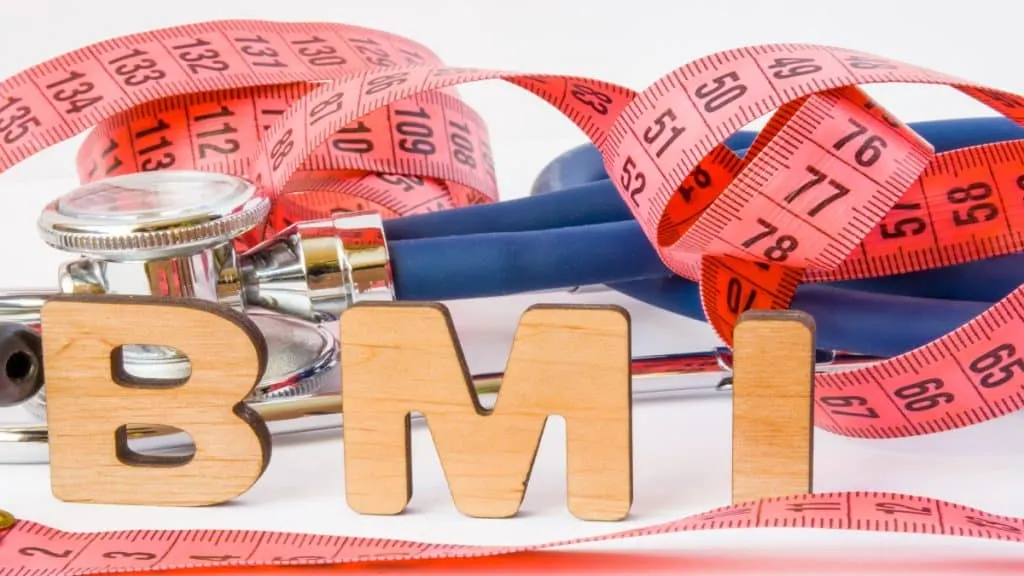A BMI of 15 and a BMI of 15.5 are both very low for men and women. So what does this mean for your health?
Well, since a low BMI is only an indicator that a person might be suffering from poor health, it’s important to get a full health checkup from a doctor to determine your true health status.
Still, the research is pretty clear: Those with a low body mass index, like 15, tend to have worse health outcomes than normal-weight individuals.
Related:
What are the health risks of a 15 BMI?

The health risks of a 15 BMI are malnutrition, sarcopenia, osteoporosis, hypothermia, and a weakened immune system.
Some of the health risks are particularly significant for older adults, who can often lack the appetite to regain their weight once they lose it.
As such, it’s crucial that public health workers monitor the body weight and BMIs of the aging population so that they don’t suffer from a lack of consumption.
Younger people with a 15 BMI may also suffer from eating disorders like anorexia, which is particularly dangerous because it can cause a person’s weight to become dangerously low.
What does a BMI of 15 look like?

Considering that a BMI of 15 is around half of the average for males and females, a BMI 15 individual naturally looks very thin and skinny due to their lack of muscle mass and body fat.
Generally, the taller that a BMI 15 person is, the thinner they will look as their frame will appear less “filled out.”
While some people may have very visible muscle definition at a body mass index of 15, it’s also very likely that they’re lacking muscle mass as well, which could weaken their immune system over time.
Common BMI 15 scores and their meaning

Here are some common 15 BMI scores, along with an outline of their meaning.
15.1 BMI
A 15.1 BMI is considered severely underweight and will need to be increased so that an individual can live life in better health.
15.2 BMI
A BMI of 15.2 is around half the average and, as such, is an indication that an individual is much too thin for a person of their height.
15.3 BMI
Those who have a 15.3 BMI may be risking malnutrition and similar health problems by consuming insufficient calories and micronutrients.
15.4 BMI
Those with a 15.4 BMI may have worse health than those of a normal body weight by risking malnutrition, anemia, muscle loss, and a weakened immune system.
15.5 BMI
If you have a 15.5 BMI, then you’re much skinnier than usual for a person of your height. Therefore, if you have a BMI of 15.5, you’ll want to gain weight so that you can strengthen your body to make it more resilient to illness.
15.6 BMI
A 15.6 BMI is an indication that a person is very thin because a BMI of 15.6 is around 3 BMI points into the underweight category.
15.7 BMI
Although it might not sound that low to some people, a BMI of 15.7 is actually considered severely underweight and could, therefore, lead to poor health.
15.8 BMI
If you have a BMI of 15.8, then you will likely be encouraged to gain weight in order to improve your health. Those with a 15.8 BMI could still look slim even if they increased their body mass significantly.
15.9 BMI
A 15.9 BMI is on the low side and, by some classifications, is actually considered severely underweight.
Conclusion: Is a BMI of 15 bad?
Since a BMI of 15 is significantly lower than the healthy cut-off point, it’s likely that a BMI 15 individual is harming their health (or, at the very least, risking their long-term health) by maintaining such a low body weight for a person of their height.
If you have a 15 BMI, you should talk to your doctor to rule out underlying medical issues that could be causing your underweight body mass index.
You may also have an eating disorder if you have a BMI of 15, in which case professional help can improve your body image drastically and help you achieve a healthy body weight.
References
- Ford, E. S., Moriarty, D. G., Zack, M. M., Mokdad, A. H., & Chapman, D. P. (2001). Self-reported body mass index and health-related quality of life: findings from the Behavioral Risk Factor Surveillance System. Obesity research, 9(1), 21–31. https://doi.org/10.1038/oby.2001.4
- Pan, A., Kawachi, I., Luo, N., Manson, J. E., Willett, W. C., Hu, F. B., & Okereke, O. I. (2014). Changes in body weight and health-related quality of life: 2 cohorts of US women. American journal of epidemiology, 180(3), 254–262. https://doi.org/10.1093/aje/kwu136

